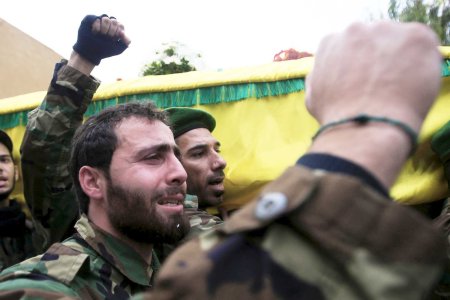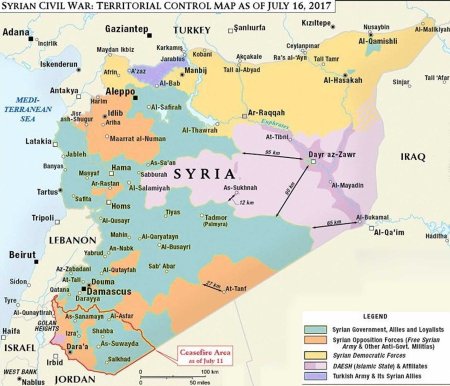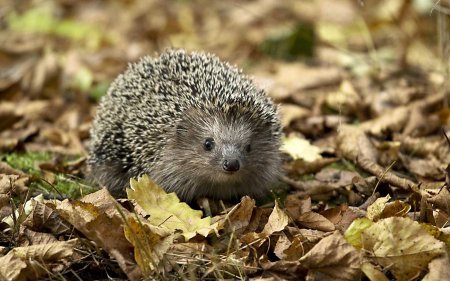The six-and-a-half-year-old Syria war is reaching a new stage, perhaps its final. The government is consolidating its control over most of the cities and over more densely populated areas, while IS (Islamic State) is losing ground fast, retreating on every front.
Areas evacuated by the rapidly disintegrating terror organization north of the Euphrates River are taken by the Kurdish dominated SDF (Syrian Democratic Forces), areas south of the river are for the Syrian Army. There seem to be secret meetings and agreements between SDF and army. The town Al-Akirshi east of Raqqa was handed over to the government after being captured from IS by SDF, a move which was necessary to bring government troops closer to Deir ez-Zor.
Legendary journalist Robert Fisk reported, that the Russians, the army, and the SDF have set up a secret coordination center in the Syrian desert. Fisk: ”I sat on the floor of an ill-painted villa with a Russian air force colonel in camouflage uniform, a young officer of the Kurdish militia — with a YPG (Kurdish People’s Militia) patch on his sleeve — and a group of Syrian officers and local Syrian tribal militiamen.”
This is not the first time Kurds and government cooperate, when Manbij was threatened by Turkey, the Kurds transferred a string of villages between Manbij and al-Bab to government control. In the battle for Aleppo city the Kurds in Sheikh Maqsoud closely coordinated with the government forces.
Independent Kurdish writer and politician Mahfouz Rashid wrote: “I do not expect any clashes between SDF and the government in the future. The meetings in Astana are meant to drain radical factions. SDF and SAA are the two main elements in building the Syrian National Army of the future.”
All sides play a risky game
The Kurds try to balance between USA, Russia, and Syria in order to get the best autonomy deal. Instigated by the USA they fight in Raqqa against IS in order to get US weapons and political backing, while the Syrian government helps to maintains public services and is a partner in the fight against Islamists. Russia is a mediator and helps to keep the Turks at bay. The Kurdish canton Afrin is protected by a Russian base in Kafarjana (which didn’t hinder Turkish artillery to bombard Kafarjana and Qatma).

With IS driven out from Mosul and Nineveh plains (at an extremely high death toll of 40,000 people in Mosel alone) the fighting is moving west. Shia PMU (popular mobilization units) have been pushing westward to the Iraq-Syrian border, converging with Syrian government forces. This has established a land route from Iran through Iraq and Syria to Lebanon and with it has made the by Western powers feared and detested “Shia Crescent” a reality.
Following a ceasefire agreement between the United States and Russia after the G-20 meeting in Hamburg, Germany, the provinces Quneitra, Daraa, Suweida, which are bordering Jordan and the Israeli-occupied Golan Heights, are now relatively quiet.
Israeli Prime Minister, Benjamin Netanyahu is displeased with the ceasefire and tries to undermine it, because he fears, that it will lead to a permanent Iranian and Hezbollah presence along the border.
After appeals to US President Trump were ignored, Israel tries to infiltrate southern Syria to create a buffer zone against Iran and Hezbollah. Termed “Operation Good Neighbor,” Israel is building ties with various heads of tribes and influential families. The New York Times reported on July 20 about large shipments of Israeli aid going to the border. Eyewitnesses also told that Israel sends reinforcements into the Golan Heights.
 The Islamic militants in al-Tanf on the Jordanian border, shielded by US special forces, armed and paid by the al-Muk Operation Room in Jordan, have not achieved anything and are surrounded by Syrian troops. Their US handlers wanted to move them to Ragqa for participating in the SDF-campaign against IS, but they refused. Payments for the group Shuhada Qaryatayn have stopped.
The Islamic militants in al-Tanf on the Jordanian border, shielded by US special forces, armed and paid by the al-Muk Operation Room in Jordan, have not achieved anything and are surrounded by Syrian troops. Their US handlers wanted to move them to Ragqa for participating in the SDF-campaign against IS, but they refused. Payments for the group Shuhada Qaryatayn have stopped.
Most of the fighters will try to relocate to the Israeli border to be employed by the Israelis. Maghawir al-Thawra commander Abu Housse and some of his fighters reportedly defected to the government with a load of weapons.
The battle for Raqqa, the center of the IS caliphate, is bloody, with many civilian casualties. The SDF is slowly advancing and has captured approximately half of the city. IS claims that it killed 853 SDF soldiers, wounded 300, and destroyed 40 military vehicles. IS also counts 43 SVBIED attacks and 37 IED explosions. Though death, suffering, and destruction are beyond comprehension, they are clearly on a lesser scale than Mosul.
This could be a pyrrhic victory for the Kurds who fight on Arab land in which they have no interest. They think the USA will be thankful and indebted to them, but it could be that they find out that their Western friends just have used them. Used them up to throw them away when it is convenient.

The Syrian army meanwhile is focusing on the offensive to break the siege of Deir ez-Zor, where government troops hold out since three years against the IS monsters. The lifting of the siege would be an epic victory, inspiriting and energizing all Syrians and giving hope that the end of the war is near.
Both sides know that this battle is decisive, and IS fights hard, maybe even more tenaciously and doggedly than in Raqqa. At the moment the Syrian army is stuck in the mountains around Suknah, though Qulylat Mountain south of the city has been captured. If Suknah is taken, troops can progress faster, because there is only plain desert between Suknah and Deir ez-Zor.
There is of course always the danger of suicidal raids by IS commandos. One IS-fighter told relatives in an intercepted message that he is preparing for a mission from which he probably will not come back.
It is unspeakably sad how without hesitation lives are thrown away in this war with the main goal of ending other lives.
Much needed de-escalation
Before the ceasefire on the southern borders, a series of negotiations between Russia, Turkey, Iran, and Syria in the Kazakh capital Astana resulted in four “de-escalation” zones, which are:
Zone 1: Idlib province, plus minor northeastern areas of Latakia province, western areas of Aleppo province and northern areas of Hama province. One million people live in this zone, the rebel factions are dominated by HTS (Hayat Tahrir al-Sham, formerly al-Qaeda branch al-Nusra).
Zone 2: The Rastan and Talbiseh enclave in northern Homs province. The population is approximately 180,000.
Zone 3: Eastern Ghouta in the northern Damascus countryside. It is controlled by Jaish al-Islam, a rebel faction funded by Saudi Arabia, but also partly by HTS. Bloody infighting between Jaish al-Islam and HTS has weakened the Islamists. There are also signs of tensions between HTS and Faylaq al-Rahman, a militia who until now worked together with HTS. Eastern Ghouta is home to about 690,000 people.
Zone 4: The rebel-controlled south along the border with Jordan that includes parts of Deraa and Quneitra provinces. Up to 800,000 people live there. The US-Russian ceasefire has made this zone obsolete.
Idlib, an Islamist showcase
After a few days of fighting against fellow Islamists Ahrar Al Sham, HTS fully controls Idlib province. All headquarters and weapons depots of Ahrar Al Sham are captured, which means, that Ahrar Al Sham is defeated, powerless, in fact irrelevant. It is said that 13,000 Ahrar Al Sham fighters defected to HTS.
HTS controls the Bab al Hawa crossing with Turkey, but Turkey keeps the border crossing open (for humanitarian reasons of course), and border guards let trucks pass without checking the cargo. Turkish and Western NGOs have invested large sums into Idlib to create the impression that Islamists are able to govern the province and can keep up public services, but this is a mirage and it is unsustainable. Sewage systems and electricity grids are in desperate need of repairs due to years of fighting, health clinics and schools are chronically under-resourced.
The NGO-efforts are just a drop in the ocean, inadequate, uncoordinated, and obstructed by criminals and local warlords, who do their dirty business under the banner of HTS. Local councils and civil society groups are constantly struggling with HTS about the control of facilities and resources. HTS routinely seizes aid convoys and depots of vital goods, it also tries to kidnap and kill local activists.
When the dust settles and Western money flows run dry, the population will become restless and blame the Islamists for the shortcomings, for the breakdown of services, for corruption and nepotism. There were already protests in Maarat al-Numan, Saraqeb, Atareb, and other towns.
Turkey was the main supporter of Ahrar Al Sham, but it will support HTS too, as it supported IS till Western pressure and worldwide public condemnation started to bite. HTS is, like IS, universally regarded as a terror organization, and that will become a problem for Turkey. Another problem will be the high costs of maintaining both the Islamists rule and the public services in the province.

The Syrian government only needs to cordon off Idlib. Turkey will not be able to annex the province, for geopolitical and economic reasons, it will probably after a while quietly step back and just hermetically close the border.
Solutions for the Damascene district Jobar and Eastern Ghouta are more urgent, as the Islamists there regularly launch mortar and missile attacks against residential areas in Damascus. The Islamists in Jobar use a network of underground tunnels to facilitate the movement of fighters and supplies, the Republican guard, one of the most battle-hardened and best equipped units, has failed many times to take the area, suffering terrible losses.
Jobar is urgent indeed, but it has to wait till Deir ez-Zor is freed.

After driven out from most of their bases by Hezbollah the jihadis of HTS have consented to leave the mountain region along the Syria-Lebanon border as part of a truce agreement. Five hostages will be released and HTS fighters will be deported to Idlib. This is not the end of the story because there is an adjacent small IS pocket, but Hezbollah and the Syrian army is dealing with it right now. Syrian troops have occupied the al-Sharqia, al-Valilal, and al-Karra mountains, IS has been completely surrounded in their last northern mountain stronghold. They are still flying their miniature drones towards the Syrian and Hezbollah lines but they are doomed and none of them will survive this fight.
A long way to go
The jihadists are not defeated yet and there will be setbacks and more tragic losses of live. Even after Deir ez-Zor is relieved, Eastern Ghouta and Idlib have come under government control again, and an autonomy deal with the Kurds is reached, it will not just be a mop-up operation, because the Islamic fanatics will hide and open warfare will morph into a low level insurgency, a terror campaign with assassinations, bombings, arson, poisoning of wells, sabotage, and all other possible kinds of subversion.
The Syrian people will not forget, who brought all this pain and suffering upon them while the people of the world should watch carefully and make their conclusions.

Areas evacuated by the rapidly disintegrating terror organization north of the Euphrates River are taken by the Kurdish dominated SDF (Syrian Democratic Forces), areas south of the river are for the Syrian Army. There seem to be secret meetings and agreements between SDF and army. The town Al-Akirshi east of Raqqa was handed over to the government after being captured from IS by SDF, a move which was necessary to bring government troops closer to Deir ez-Zor.
Legendary journalist Robert Fisk reported, that the Russians, the army, and the SDF have set up a secret coordination center in the Syrian desert. Fisk: ”I sat on the floor of an ill-painted villa with a Russian air force colonel in camouflage uniform, a young officer of the Kurdish militia — with a YPG (Kurdish People’s Militia) patch on his sleeve — and a group of Syrian officers and local Syrian tribal militiamen.”
This is not the first time Kurds and government cooperate, when Manbij was threatened by Turkey, the Kurds transferred a string of villages between Manbij and al-Bab to government control. In the battle for Aleppo city the Kurds in Sheikh Maqsoud closely coordinated with the government forces.
Independent Kurdish writer and politician Mahfouz Rashid wrote: “I do not expect any clashes between SDF and the government in the future. The meetings in Astana are meant to drain radical factions. SDF and SAA are the two main elements in building the Syrian National Army of the future.”
All sides play a risky game
The Kurds try to balance between USA, Russia, and Syria in order to get the best autonomy deal. Instigated by the USA they fight in Raqqa against IS in order to get US weapons and political backing, while the Syrian government helps to maintains public services and is a partner in the fight against Islamists. Russia is a mediator and helps to keep the Turks at bay. The Kurdish canton Afrin is protected by a Russian base in Kafarjana (which didn’t hinder Turkish artillery to bombard Kafarjana and Qatma).

With IS driven out from Mosul and Nineveh plains (at an extremely high death toll of 40,000 people in Mosel alone) the fighting is moving west. Shia PMU (popular mobilization units) have been pushing westward to the Iraq-Syrian border, converging with Syrian government forces. This has established a land route from Iran through Iraq and Syria to Lebanon and with it has made the by Western powers feared and detested “Shia Crescent” a reality.
Following a ceasefire agreement between the United States and Russia after the G-20 meeting in Hamburg, Germany, the provinces Quneitra, Daraa, Suweida, which are bordering Jordan and the Israeli-occupied Golan Heights, are now relatively quiet.
Israeli Prime Minister, Benjamin Netanyahu is displeased with the ceasefire and tries to undermine it, because he fears, that it will lead to a permanent Iranian and Hezbollah presence along the border.
After appeals to US President Trump were ignored, Israel tries to infiltrate southern Syria to create a buffer zone against Iran and Hezbollah. Termed “Operation Good Neighbor,” Israel is building ties with various heads of tribes and influential families. The New York Times reported on July 20 about large shipments of Israeli aid going to the border. Eyewitnesses also told that Israel sends reinforcements into the Golan Heights.
 The Islamic militants in al-Tanf on the Jordanian border, shielded by US special forces, armed and paid by the al-Muk Operation Room in Jordan, have not achieved anything and are surrounded by Syrian troops. Their US handlers wanted to move them to Ragqa for participating in the SDF-campaign against IS, but they refused. Payments for the group Shuhada Qaryatayn have stopped.
The Islamic militants in al-Tanf on the Jordanian border, shielded by US special forces, armed and paid by the al-Muk Operation Room in Jordan, have not achieved anything and are surrounded by Syrian troops. Their US handlers wanted to move them to Ragqa for participating in the SDF-campaign against IS, but they refused. Payments for the group Shuhada Qaryatayn have stopped. Most of the fighters will try to relocate to the Israeli border to be employed by the Israelis. Maghawir al-Thawra commander Abu Housse and some of his fighters reportedly defected to the government with a load of weapons.
The battle for Raqqa, the center of the IS caliphate, is bloody, with many civilian casualties. The SDF is slowly advancing and has captured approximately half of the city. IS claims that it killed 853 SDF soldiers, wounded 300, and destroyed 40 military vehicles. IS also counts 43 SVBIED attacks and 37 IED explosions. Though death, suffering, and destruction are beyond comprehension, they are clearly on a lesser scale than Mosul.
This could be a pyrrhic victory for the Kurds who fight on Arab land in which they have no interest. They think the USA will be thankful and indebted to them, but it could be that they find out that their Western friends just have used them. Used them up to throw them away when it is convenient.

The Syrian army meanwhile is focusing on the offensive to break the siege of Deir ez-Zor, where government troops hold out since three years against the IS monsters. The lifting of the siege would be an epic victory, inspiriting and energizing all Syrians and giving hope that the end of the war is near.
Both sides know that this battle is decisive, and IS fights hard, maybe even more tenaciously and doggedly than in Raqqa. At the moment the Syrian army is stuck in the mountains around Suknah, though Qulylat Mountain south of the city has been captured. If Suknah is taken, troops can progress faster, because there is only plain desert between Suknah and Deir ez-Zor.
There is of course always the danger of suicidal raids by IS commandos. One IS-fighter told relatives in an intercepted message that he is preparing for a mission from which he probably will not come back.
It is unspeakably sad how without hesitation lives are thrown away in this war with the main goal of ending other lives.
Much needed de-escalation
Before the ceasefire on the southern borders, a series of negotiations between Russia, Turkey, Iran, and Syria in the Kazakh capital Astana resulted in four “de-escalation” zones, which are:
Zone 1: Idlib province, plus minor northeastern areas of Latakia province, western areas of Aleppo province and northern areas of Hama province. One million people live in this zone, the rebel factions are dominated by HTS (Hayat Tahrir al-Sham, formerly al-Qaeda branch al-Nusra).
Zone 2: The Rastan and Talbiseh enclave in northern Homs province. The population is approximately 180,000.
Zone 3: Eastern Ghouta in the northern Damascus countryside. It is controlled by Jaish al-Islam, a rebel faction funded by Saudi Arabia, but also partly by HTS. Bloody infighting between Jaish al-Islam and HTS has weakened the Islamists. There are also signs of tensions between HTS and Faylaq al-Rahman, a militia who until now worked together with HTS. Eastern Ghouta is home to about 690,000 people.
Zone 4: The rebel-controlled south along the border with Jordan that includes parts of Deraa and Quneitra provinces. Up to 800,000 people live there. The US-Russian ceasefire has made this zone obsolete.
Idlib, an Islamist showcase
After a few days of fighting against fellow Islamists Ahrar Al Sham, HTS fully controls Idlib province. All headquarters and weapons depots of Ahrar Al Sham are captured, which means, that Ahrar Al Sham is defeated, powerless, in fact irrelevant. It is said that 13,000 Ahrar Al Sham fighters defected to HTS.
HTS controls the Bab al Hawa crossing with Turkey, but Turkey keeps the border crossing open (for humanitarian reasons of course), and border guards let trucks pass without checking the cargo. Turkish and Western NGOs have invested large sums into Idlib to create the impression that Islamists are able to govern the province and can keep up public services, but this is a mirage and it is unsustainable. Sewage systems and electricity grids are in desperate need of repairs due to years of fighting, health clinics and schools are chronically under-resourced.
The NGO-efforts are just a drop in the ocean, inadequate, uncoordinated, and obstructed by criminals and local warlords, who do their dirty business under the banner of HTS. Local councils and civil society groups are constantly struggling with HTS about the control of facilities and resources. HTS routinely seizes aid convoys and depots of vital goods, it also tries to kidnap and kill local activists.
When the dust settles and Western money flows run dry, the population will become restless and blame the Islamists for the shortcomings, for the breakdown of services, for corruption and nepotism. There were already protests in Maarat al-Numan, Saraqeb, Atareb, and other towns.
Turkey was the main supporter of Ahrar Al Sham, but it will support HTS too, as it supported IS till Western pressure and worldwide public condemnation started to bite. HTS is, like IS, universally regarded as a terror organization, and that will become a problem for Turkey. Another problem will be the high costs of maintaining both the Islamists rule and the public services in the province.

The Syrian government only needs to cordon off Idlib. Turkey will not be able to annex the province, for geopolitical and economic reasons, it will probably after a while quietly step back and just hermetically close the border.
Solutions for the Damascene district Jobar and Eastern Ghouta are more urgent, as the Islamists there regularly launch mortar and missile attacks against residential areas in Damascus. The Islamists in Jobar use a network of underground tunnels to facilitate the movement of fighters and supplies, the Republican guard, one of the most battle-hardened and best equipped units, has failed many times to take the area, suffering terrible losses.
Jobar is urgent indeed, but it has to wait till Deir ez-Zor is freed.

After driven out from most of their bases by Hezbollah the jihadis of HTS have consented to leave the mountain region along the Syria-Lebanon border as part of a truce agreement. Five hostages will be released and HTS fighters will be deported to Idlib. This is not the end of the story because there is an adjacent small IS pocket, but Hezbollah and the Syrian army is dealing with it right now. Syrian troops have occupied the al-Sharqia, al-Valilal, and al-Karra mountains, IS has been completely surrounded in their last northern mountain stronghold. They are still flying their miniature drones towards the Syrian and Hezbollah lines but they are doomed and none of them will survive this fight.
A long way to go
The jihadists are not defeated yet and there will be setbacks and more tragic losses of live. Even after Deir ez-Zor is relieved, Eastern Ghouta and Idlib have come under government control again, and an autonomy deal with the Kurds is reached, it will not just be a mop-up operation, because the Islamic fanatics will hide and open warfare will morph into a low level insurgency, a terror campaign with assassinations, bombings, arson, poisoning of wells, sabotage, and all other possible kinds of subversion.
The Syrian people will not forget, who brought all this pain and suffering upon them while the people of the world should watch carefully and make their conclusions.












